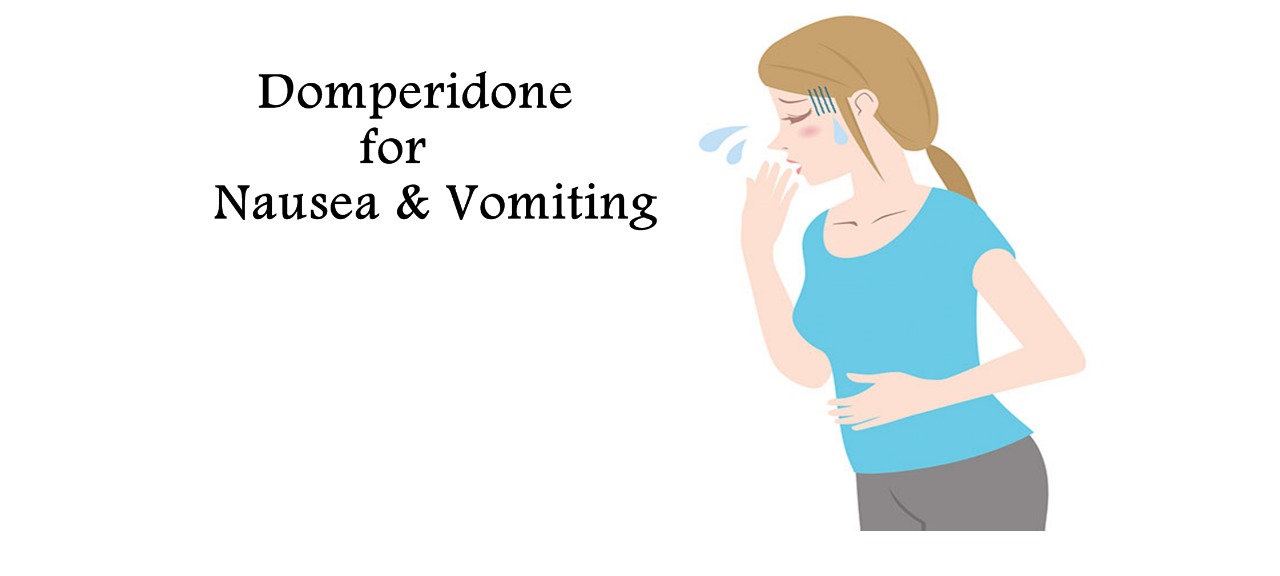
The primary domperidone uses are to recover from the pain and serious illness caused by postprandial reflux. PR is a distinguished feature of gastroesophageal reflux disease caused due to the relaxed state of the lower sphincter part of the oesophagus. (1)
Chemical Formulae – C22H24ClN5O2
Weight – 425.911 mg
Table of Contents
Conditions Treated by Domperidone
Domperidone tablet can be administered to patients with the following health conditions: (2)
- Diabetic gastroparesis
- Dyspepsia
- Erosive esophagitis
- Gastrointestinal symptoms
- Non-erosive reflux esophagitis disease
- Upper gastrointestinal motility disorder
Also Read- GERD Awareness Week – 17th to 23rd Nov 2020
Mechanism of Action
The antiemetic properties of this medicine stimulate delayed peristaltic and adjunct gastrointestinal emptying. The gastro kinetic property of domperidone can block peripheral dopamine receptors. It treats nausea by facilitating gastric emptying and lowering the transit time of the small bowel. This is done by augmenting gastric and oesophageal peristalsis and reducing sphincter pressure of the oesophagus.
It is inclined to D2 and D3 dopamine receptors, hence, activates its blocking activity at the gastric level and chemoreceptor triggered zone. Therefore, it is a medicine for vomiting and digestive disorder. (3)
Its half-life is 7 hours. Half-life refers to the pharmacokinetic parameter of medicine that reduces to 50% of its total concentration in the plasma of blood in a specific duration of time. (4)
Dosage
Kids and teenagers may take 200 – 400 microgram/Kg for 3 to 4 times a day before meal. Adults may take 10 – 20 microgram/Kg for 3 to 4 times a day.
A lesser dose is applicable for motion sickness or pain caused by food allergies. The over-the-counter drug must be avoided. Always follow the doctor’s advice before taking any medicine.
Symptoms of diverticulitis like abdominal tenderness, fever, constipation, diarrhoea are recoverable by domperidone. (5)
Side Effects
- Headache
- Dizziness
- Dry mouth
- Nervousness
- Hot flashes
- Stomach and leg cramps
- Chest pain with irregular heartbeats
- Swelling breast
- Change in the menstrual cycle
Taking domperidone in pregnancy or nursing conditions is highly risky. One of its adverse effects is dystonic reactions. It reversibly raises serum prolactin level causing gynaecomastia, galactorrhoea, abdominal cramps, hypertensive crisis, and urticaria. (6)
Contraindications
Anti-cholinergic drugs, anti-muscarinic agents and opioid analgesics antagonizes contradicts the effect of domperidone. (7)
Exporting Active Pharmaceutical Ingredients
GERD is one of the most common ailments affecting 1 out of 5 people in the world. Vomiting and nausea are predominant health conditions, which result as a side effect or symptom of many diseases. Hence, domperidone is a highly demanded medicine.
Anzen Exports is one of the leading exporter of API (active pharmaceutical ingredients) serving 611 companies across 65 nations. Domperidone is among our top ten highest selling products. We also have APIs used as supportive drugs for vomiting, indigestion, reflux, and nausea. To know more about our product line, please feel free to browse our website. For any inquiry or suggestion connect with our sales team today.
Disclaimer:
Anzen Exports’ blog posts are based just on our research from cited websites. To be best informed, we advise consulting a doctor about an ingredient or medicine prior to taking it.
Sources:
- NCBI
Website – https://www.ncbi.nlm.nih.gov/pmc/articles/PMC1884866/ - Medscape
Website – https://reference.medscape.com/medline/abstract/17488253 - Drug Bank
Website – https://go.drugbank.com/drugs/DB01184 - News Medical Life Sciences
Website – ews-medical.net/health/What-is-the-Half-Life-of-a-Drug.aspx#:~:text=The%20elimination%20half-life%20of,half%20of%20the%20starting%20dose. - Medicine Net
Website – www.medicinenet.com/domperidone-oral/article.htm - Pediatric Oncall Child Health Care
Website – https://www.pediatriconcall.com/drugs/domperidone/511 - Medscape
Website – https://reference.medscape.com/medline/abstract/17488253
